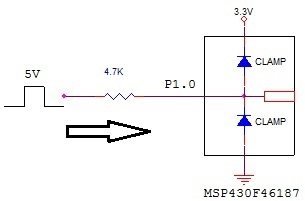Hi,
I have some 5V signals to enter MSP430 works at 3.3V. I dont want to use level translator or divider. If MSP430F47187 has internal protection diodes on its terminals, I think I can use them with only a series resistor. But I couldn't find any information about these propection diodes in the datasheet such as what is the current rating, which terminals have these protection.
10x,
BP.


